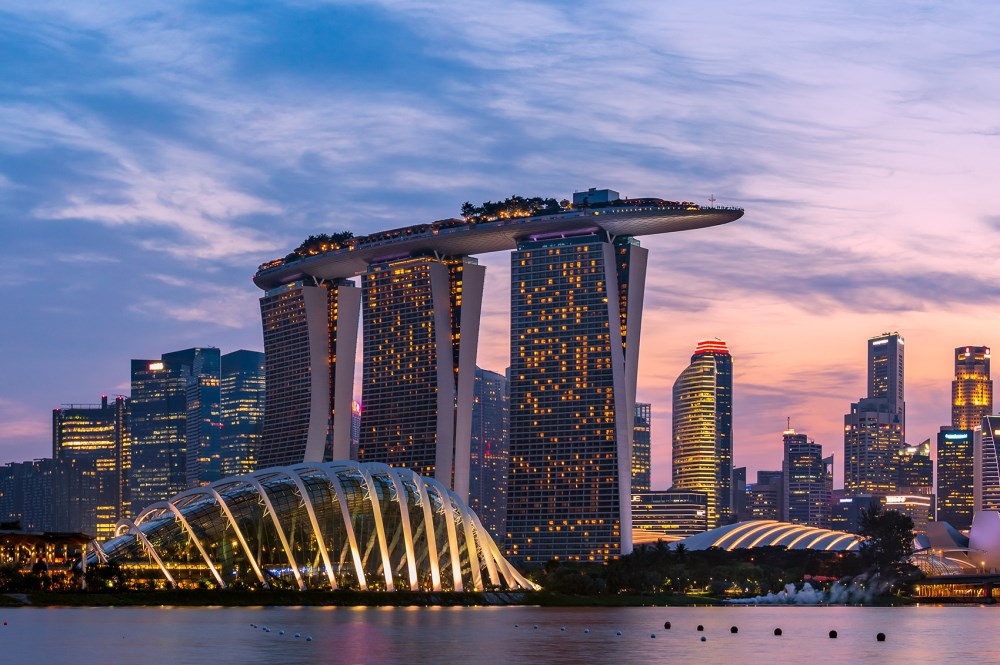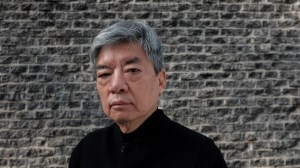The last two decades have seen architecture evolve at a staggering pace, driven by technological advancements, environmental challenges, and shifting cultural narratives. From gravity-defying skyscrapers to museums that seem to flow like sculptures, the era has produced buildings that not only redefine their urban landscapes but also challenge traditional ideas of design and engineering. Architects have embraced new materials, digital tools, and a global vision, pushing the limits of what architecture can achieve.
The following buildings, built between 2004 and 2024, exemplify the power of architecture to transform skylines and shape the way we live, work, and interact with the world around us.
The Oculus at World Trade Center by Santiago Calatrava
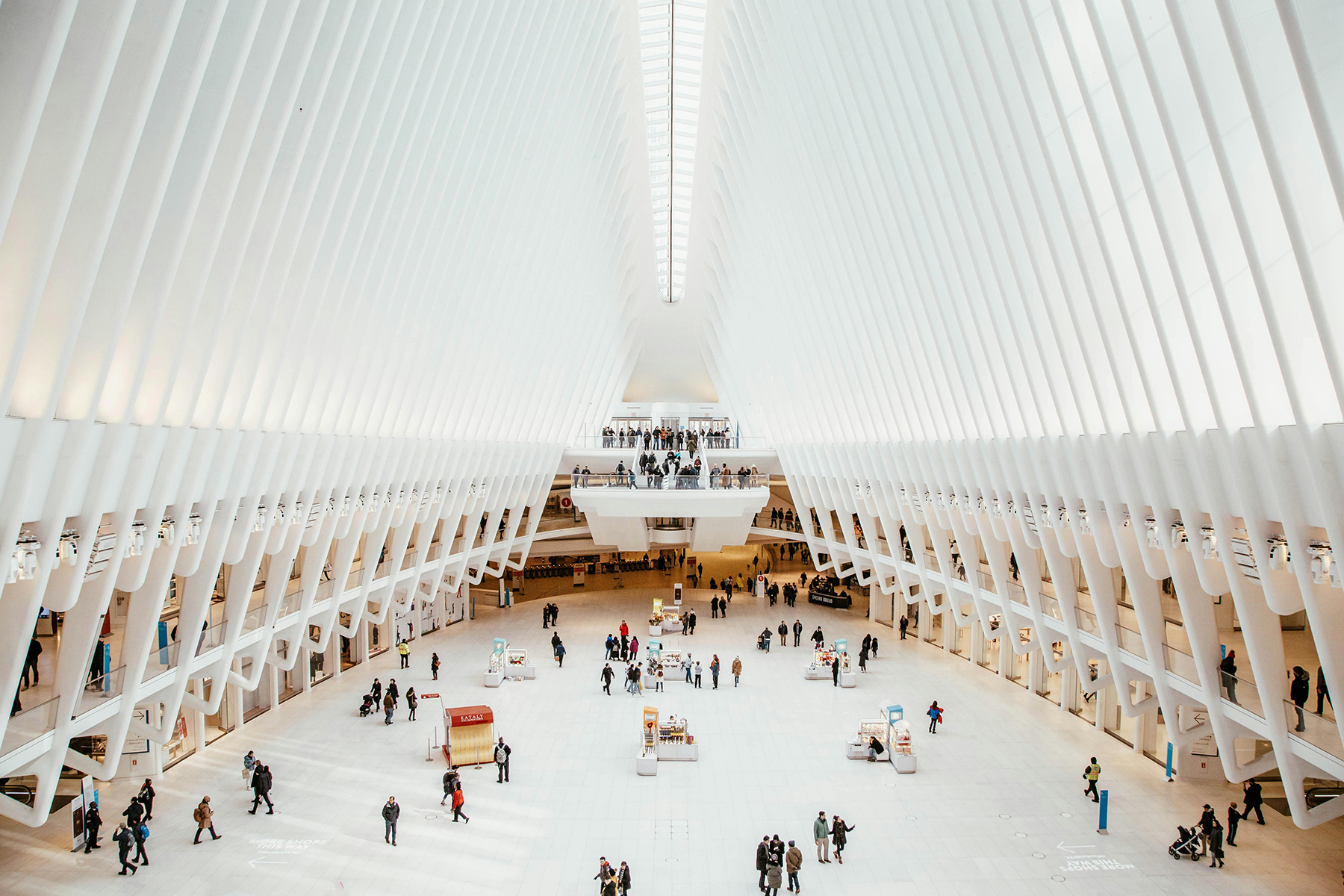
New York City, NYC, United States – Image Credit: Arthur Brognoli
The Oculus is a transportation hub designed by Spanish architect Santiago Calatrava. Its skeletal, bird-like form symbolizes a dove taking flight and serves as a memorial to the victims of the 9/11 attacks. The soaring, light-filled structure is both a functional transit hub and a work of art, offering a sense of space and peace amidst the bustling city.
Harpa Concert Hall by Henning Larsen Architects
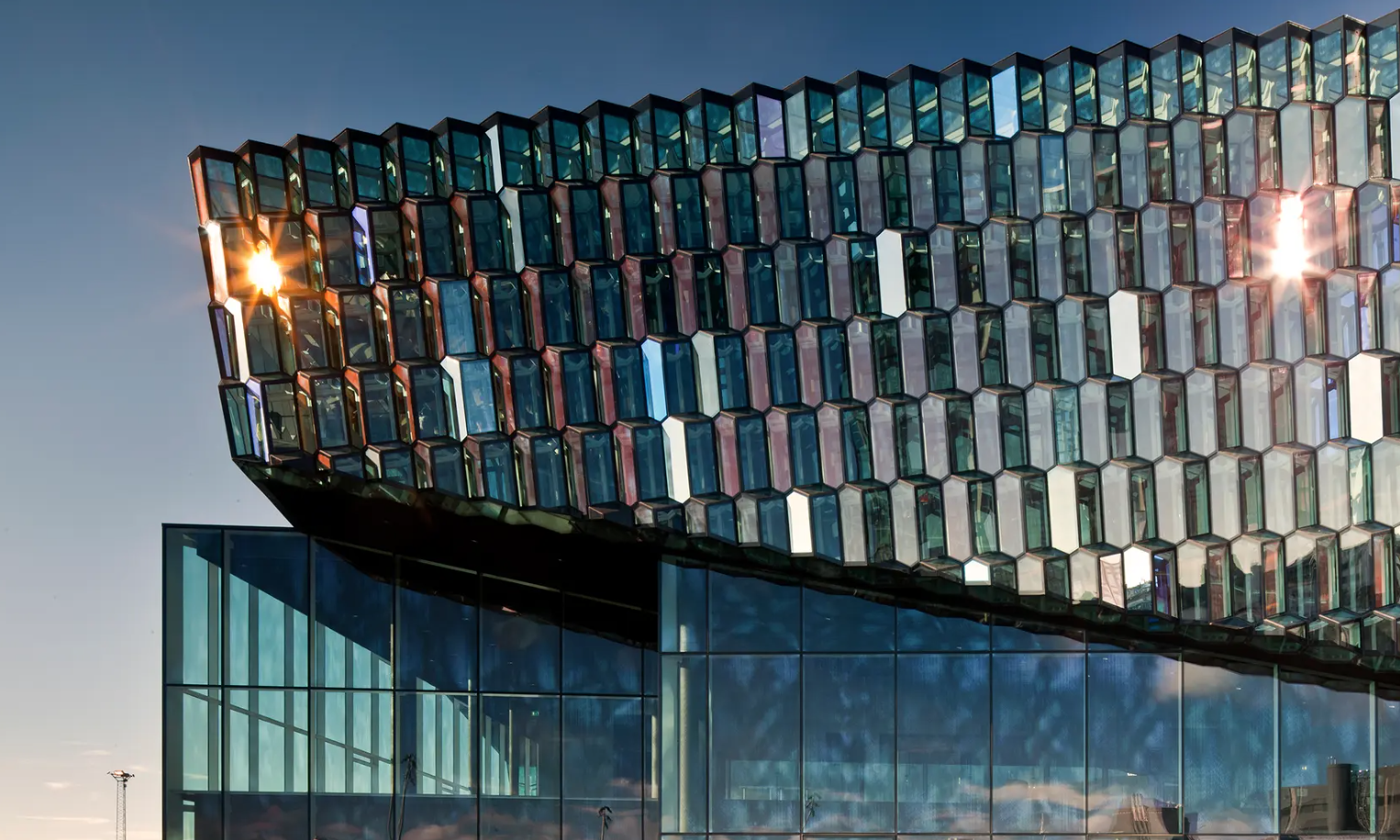
Reykjavík, Iceland – Image Credit: https://henninglarsen.com
The Harpa Concert Hall was designed by Henning Larsen Architects in collaboration with artist Olafur Eliasson. Its unique glass façade, inspired by the basalt landscapes of Iceland, reflects the changing light of the surrounding sky and sea. Harpa has become an icon of Iceland’s cultural life and architectural innovation.
Marina Bay Sands by Moshe Safdie
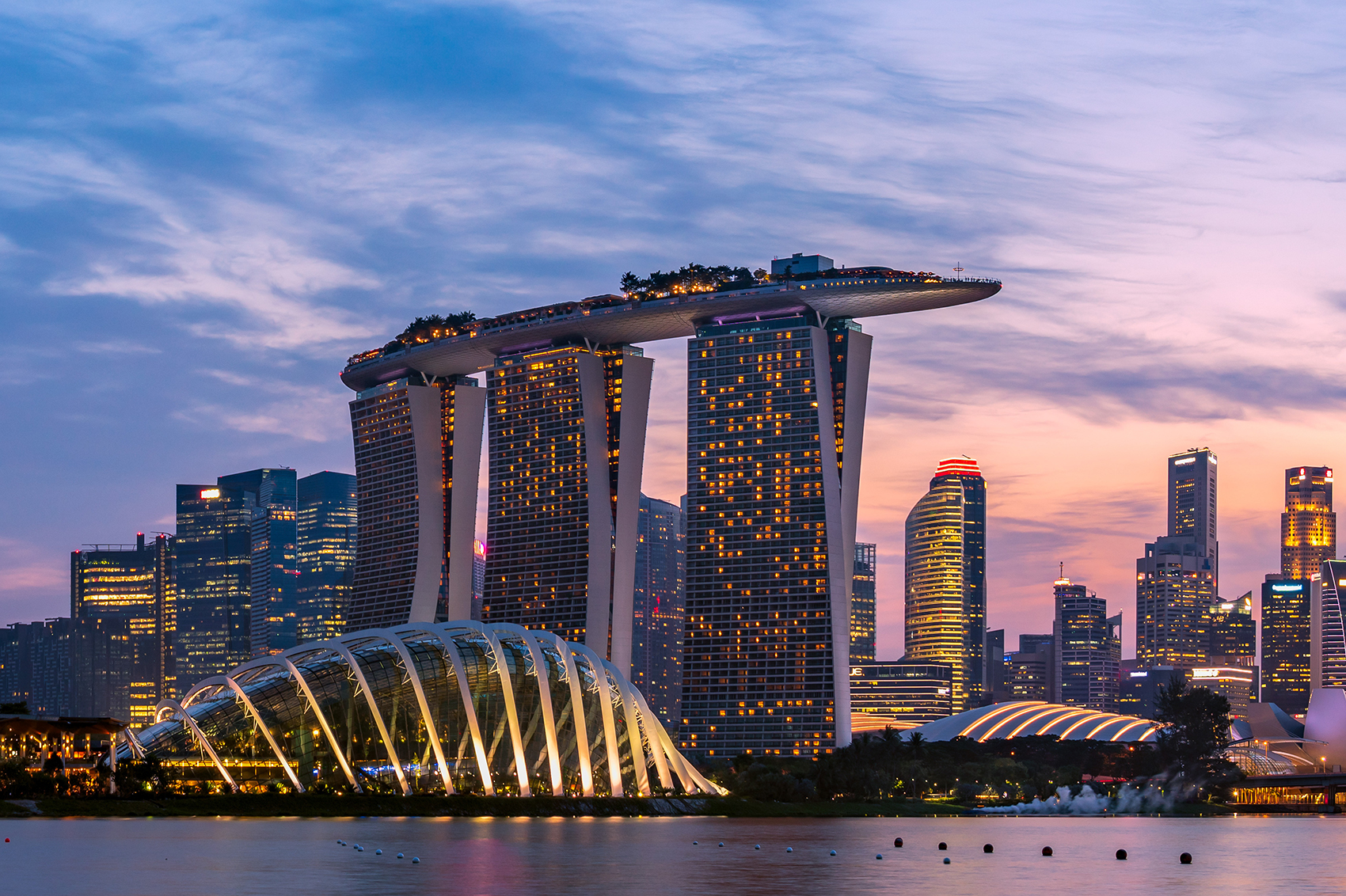
Singapore – Image Credit: hit1912
Marina Bay Sands is an architectural marvel that has transformed the city’s skyline. Composed of three interconnected towers crowned by a spectacular sky park, the structure is both a luxury hotel and an entertainment complex. Its futuristic design, combined with the magnificent infinity pool atop, makes it one of the most photographed buildings in the world.
Burj Khalifa by Skidmore, Owings & Merrill
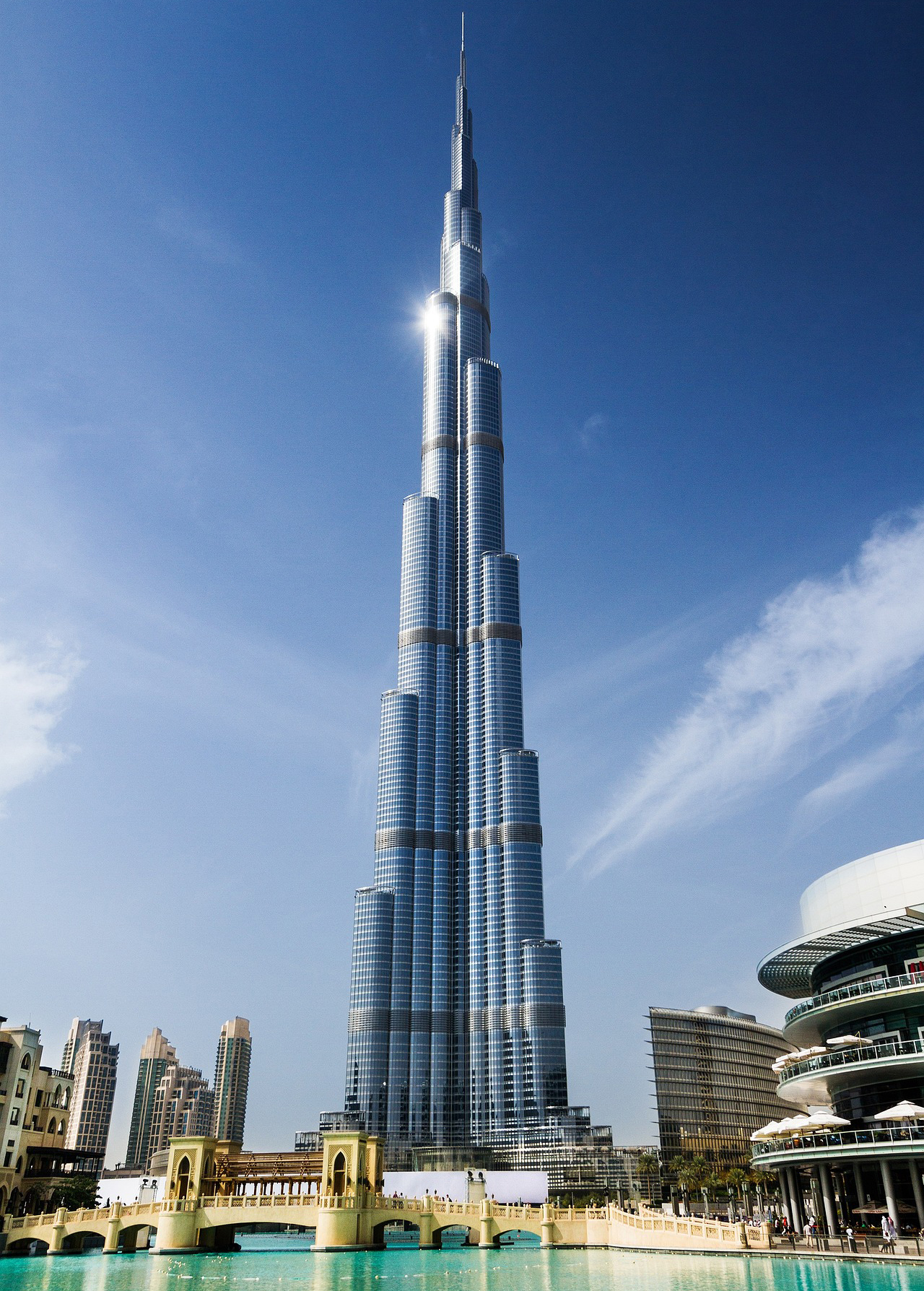
Dubai, United Arab Emirates – Image Credit: WildPixar
The Burj Khalifa stands as the tallest building in the world. Rising 2,717 feet, it is a testament to human engineering and architectural prowess. Its sleek, tapering design evokes the shape of a desert flower, blending traditional Islamic architecture with ultra-modern engineering.
Via 57 West by Bjarke Ingels Group
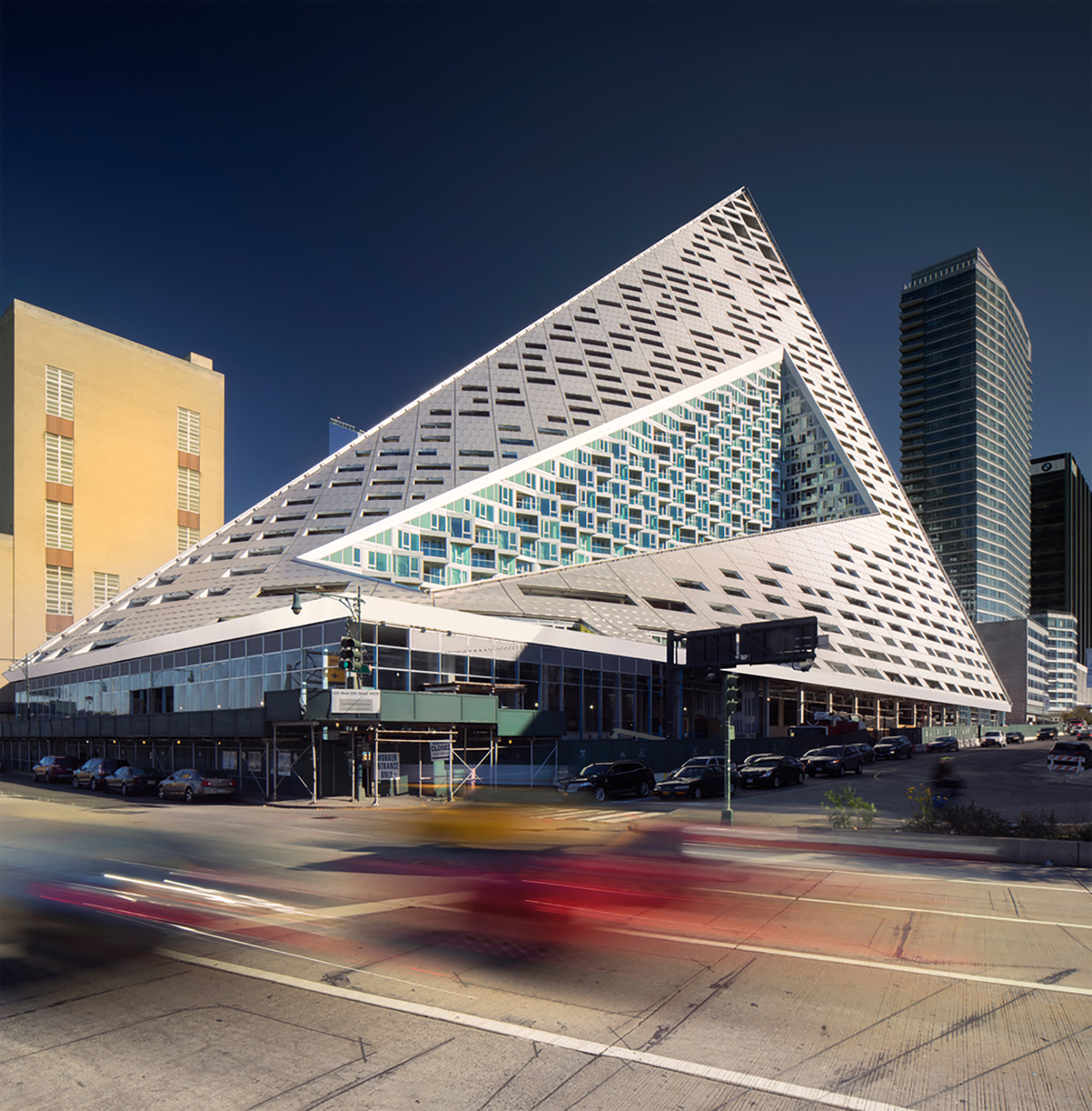
New York City, NYC, United States – Image Credit: https://big.dk
Via 57 West has a distinctive tetrahedral shape, which is sometimes described as a courtscraper for its combination of a courtyard and skyscraper. The building’s sloping form maximizes daylight and offers stunning views of the Hudson River, making it an iconic addition to the New York City skyline.
Beijing National Stadium by Herzog & de Meuron
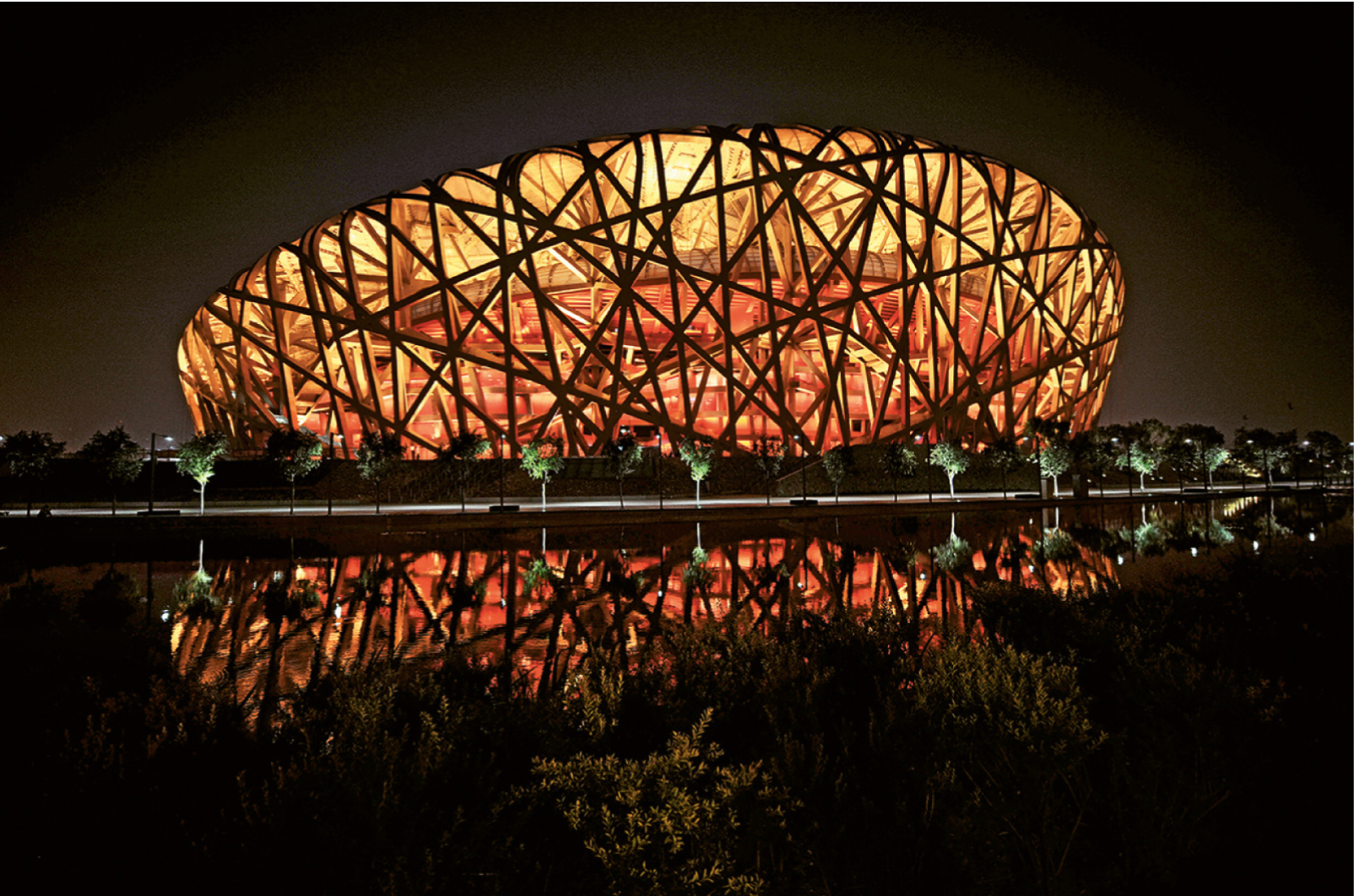
Beijing, China – Image Credit: www.herzogdemeuron.com
Beijing’s National Stadium, also known as the “Bird’s Nest,” was designed for the 2008 Olympic Games. Its intricate, web-like steel structure mimics the pattern of a bird’s nest, creating a visually striking, yet functional sports arena.
V&A Dundee by Kengo Kuma
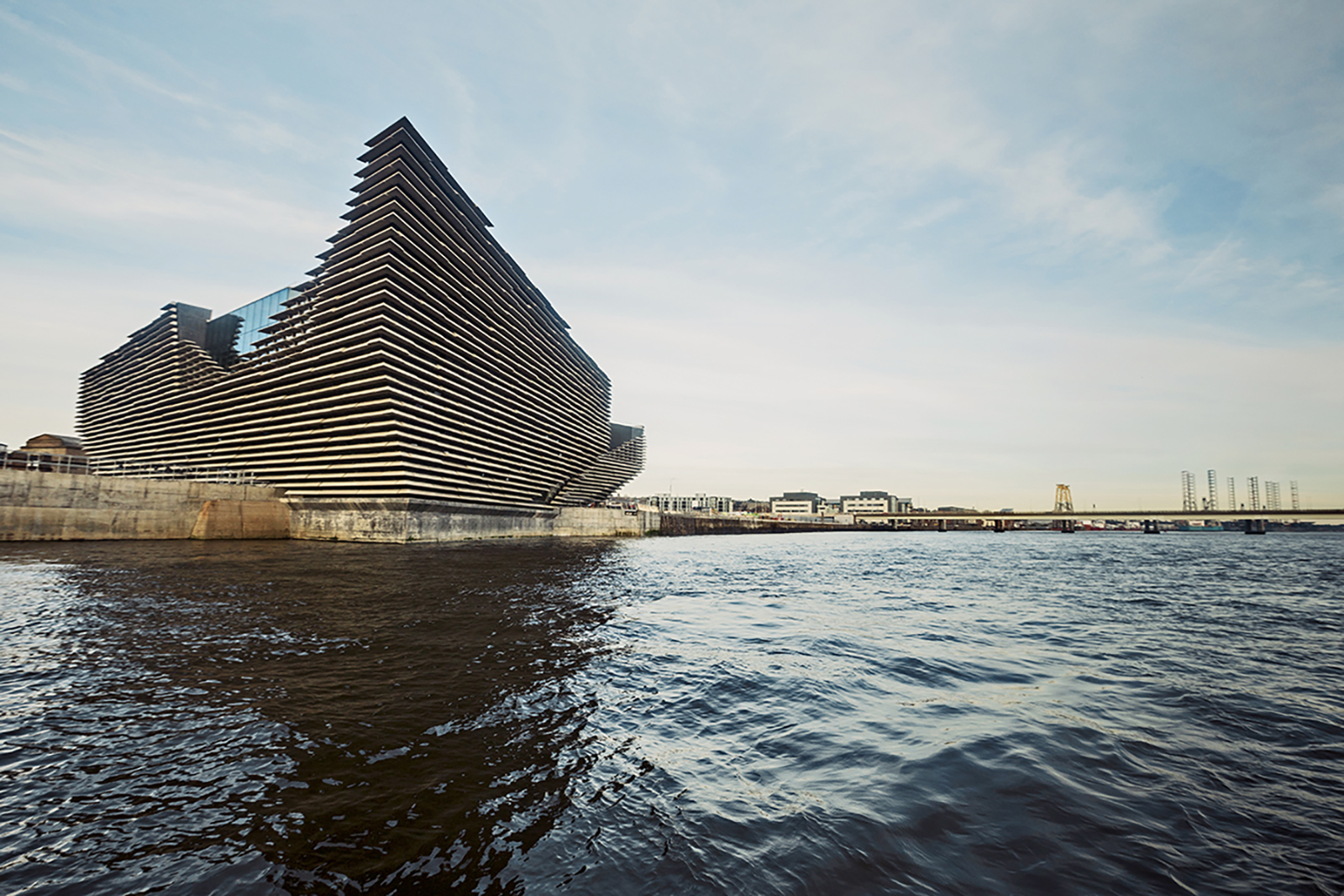
Dundee, Scotland – Image Credit: Ross Fraser McLean
The V&A Dundee resembles the dramatic cliffs along Scotland’s eastern coastline. Its dynamic, twisting form is both a homage to nature and a modern architectural statement. As the first design museum in Scotland, it has become a cultural landmark, while blending seamlessly into its riverside setting.
Heydar Aliyev Center by Zaha Hadid
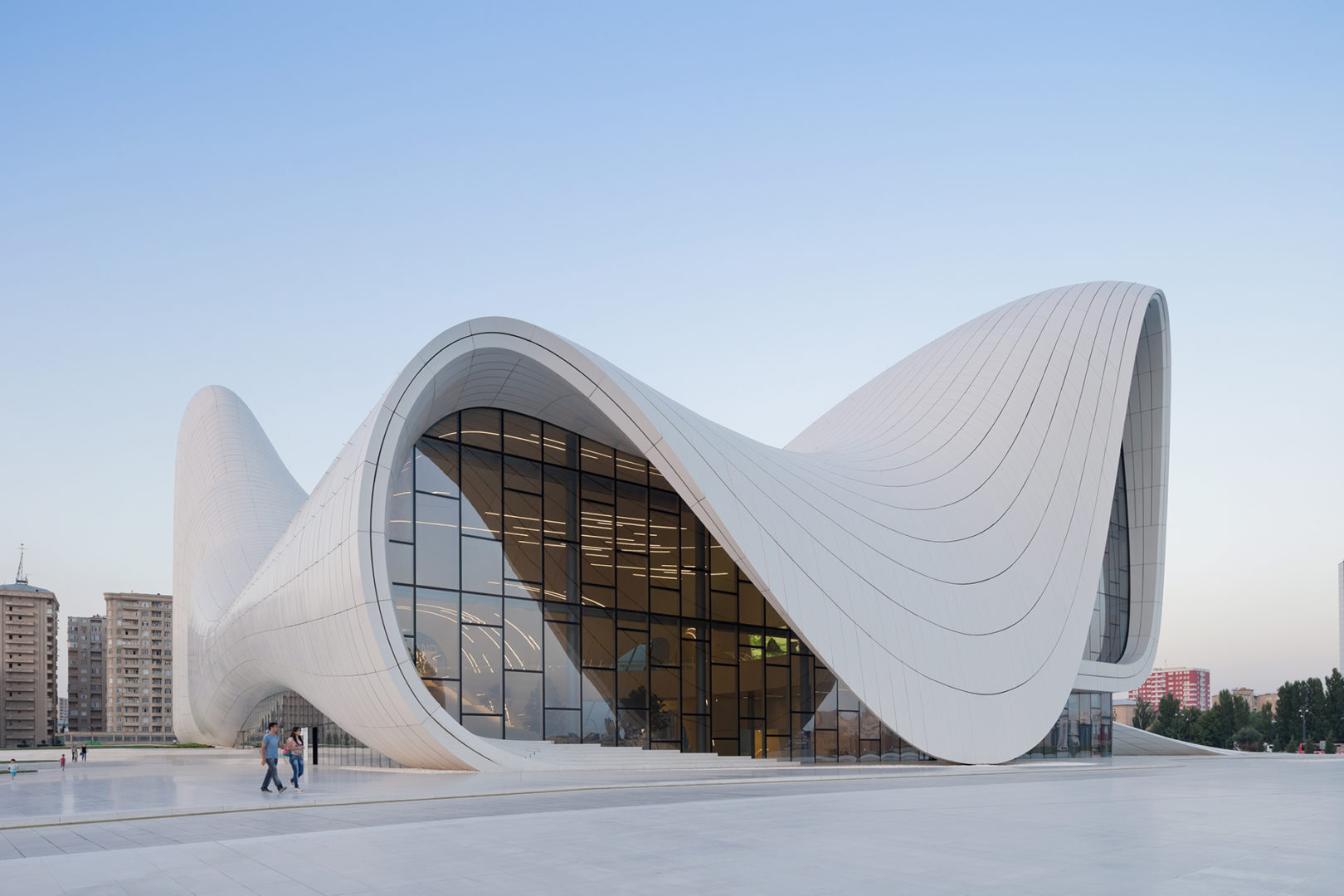 Baku, Azerbaijan – Image Credit: Iwan Baan
Baku, Azerbaijan – Image Credit: Iwan Baan
The Heydar Aliyev Center is one of Zaha Hadid’s most famous works, known for its fluid, wave-like form. The building defies the traditional notions of structure, appearing as if it’s sculpted from a single piece of material. It has become a symbol of Azerbaijan’s modernization and innovation, representing a new cultural and architectural identity.
The Shard by Renzo Piano
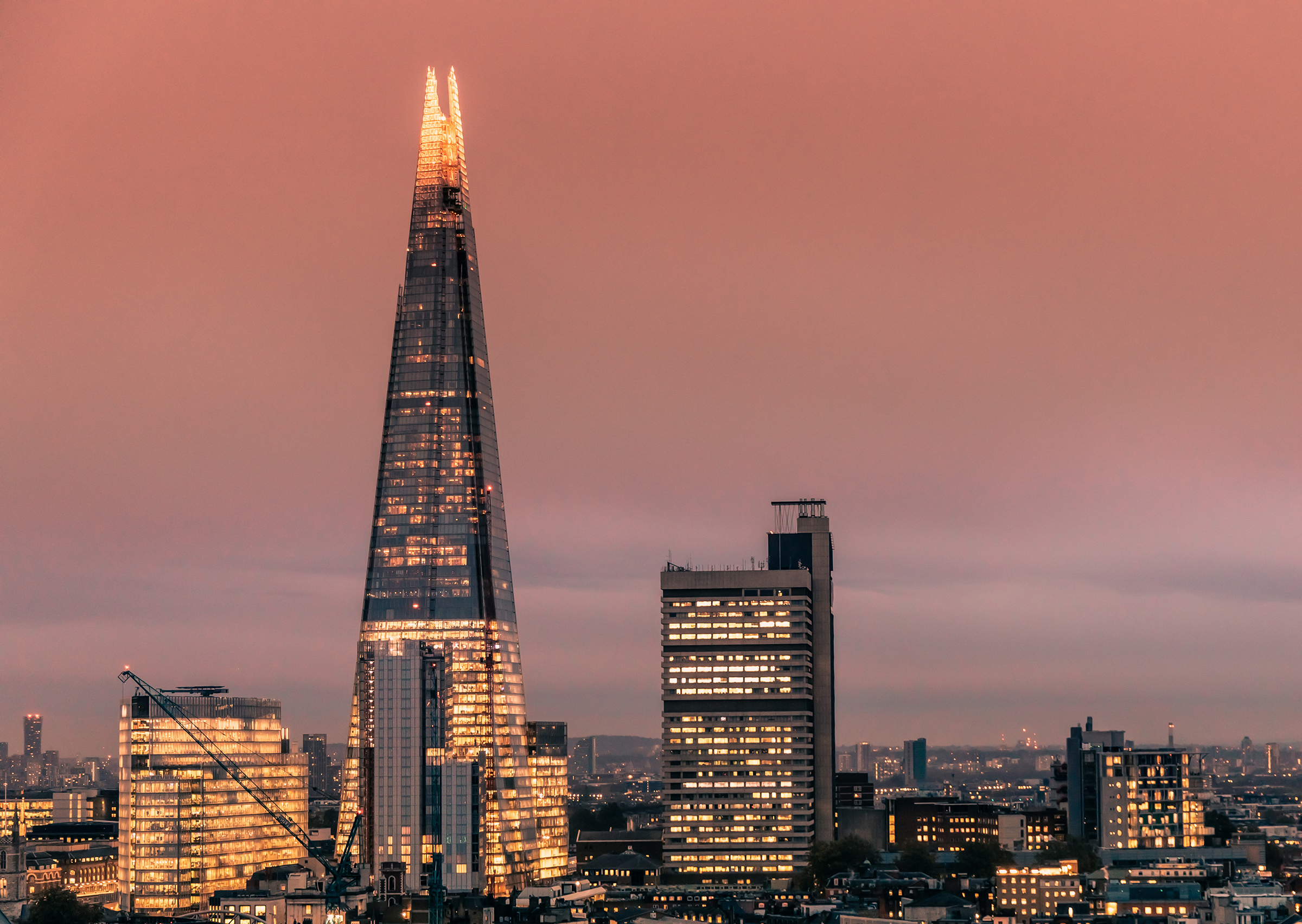
London, United Kingdom – Image Credit: Tom Eversley
The Shard is an iconic feature of London’s skyline. Standing just over 1000 feet, it was once the tallest building in Europe. Its sharp, glass-clad form reflects the city and sky, embodying Piano’s vision of transparency and light.
Museu do Amanhã by Santiago Calatrava
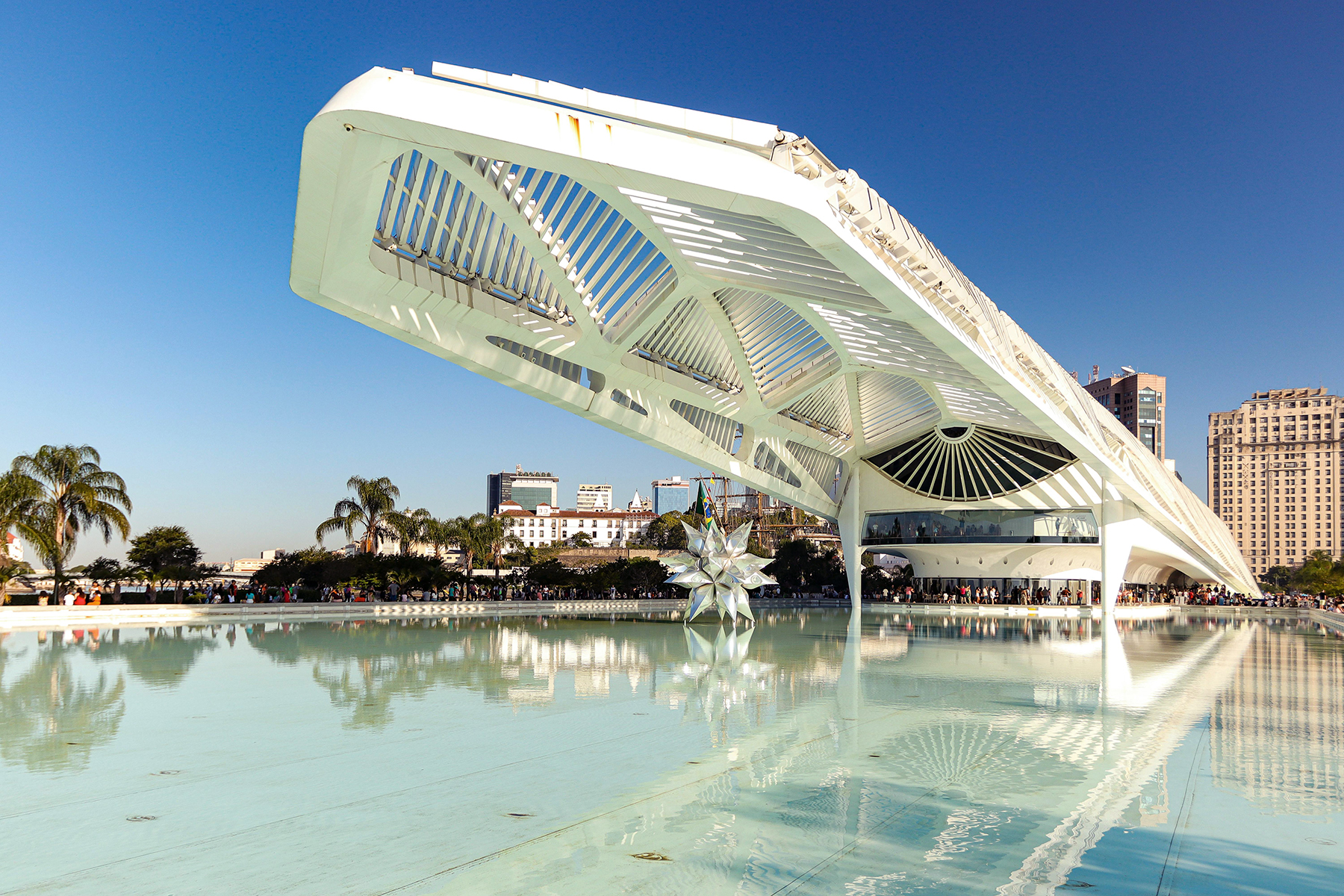
Rio de Janeiro, Brazil – Image Credit: Rodrigo Menezes
Museu do Amanhã, or Museum of Tomorrow, is a futuristic, eco-conscious building that explores the themes of sustainability and environmental responsibility. Its cantilevered form extends over the Guanabara Bay, and its design incorporates sustainable technologies, including solar panels and water recycling.
Norwegian National Opera and Ballet by Snøhetta
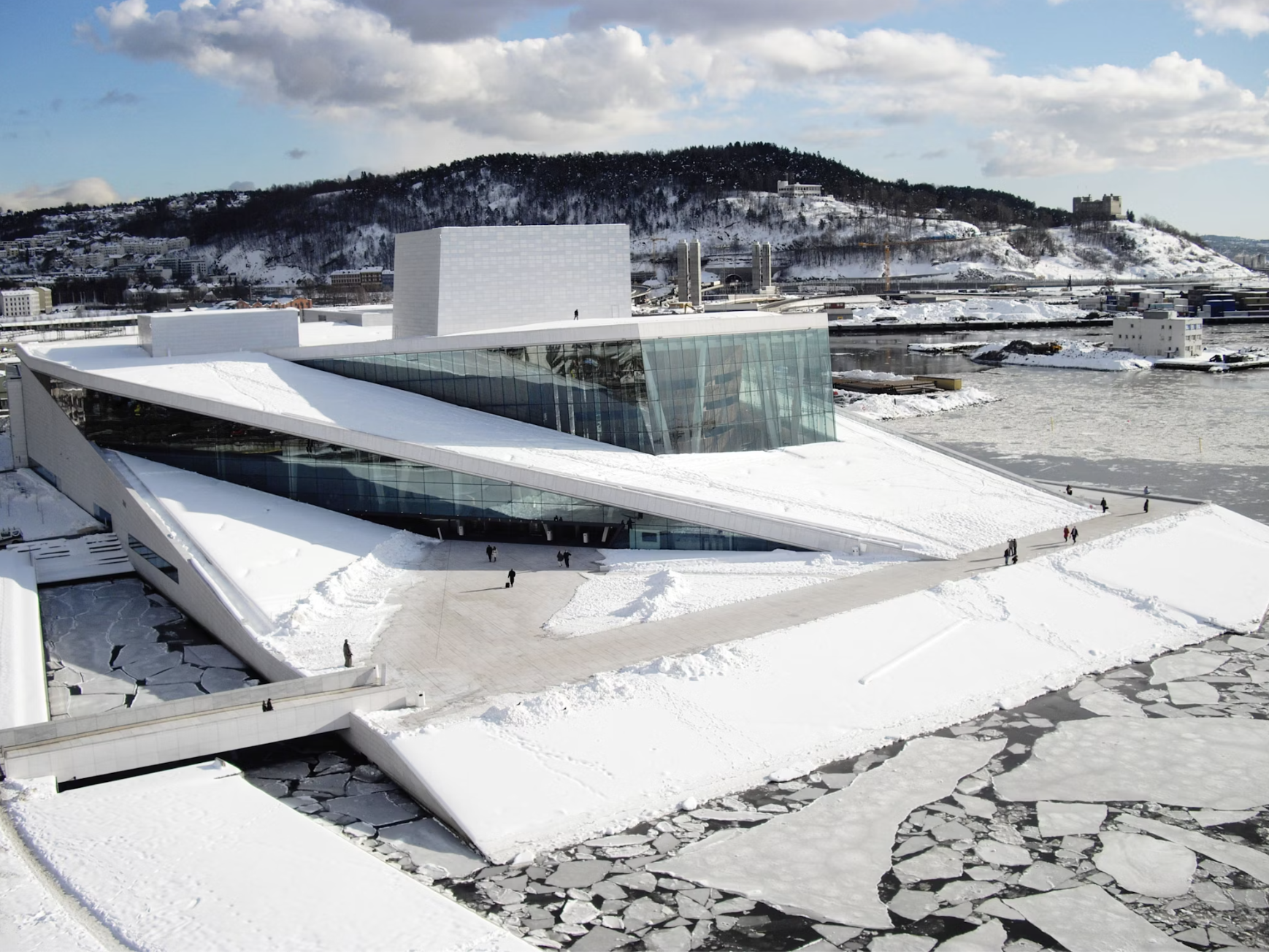
Oslo, Norway – Image Credit: www.snohetta.com
The Norwegian National Opera and Ballet invites visitors to walk on its sloped, marble-clad roof, blurring the boundaries between public space and architecture. The building rises from the Oslo fjord like a glacier, blending seamlessly into its environment. It has become a symbol of Norway’s progressive approach to culture and design.
Shenzhen Women & Children’s Center by MVRDV
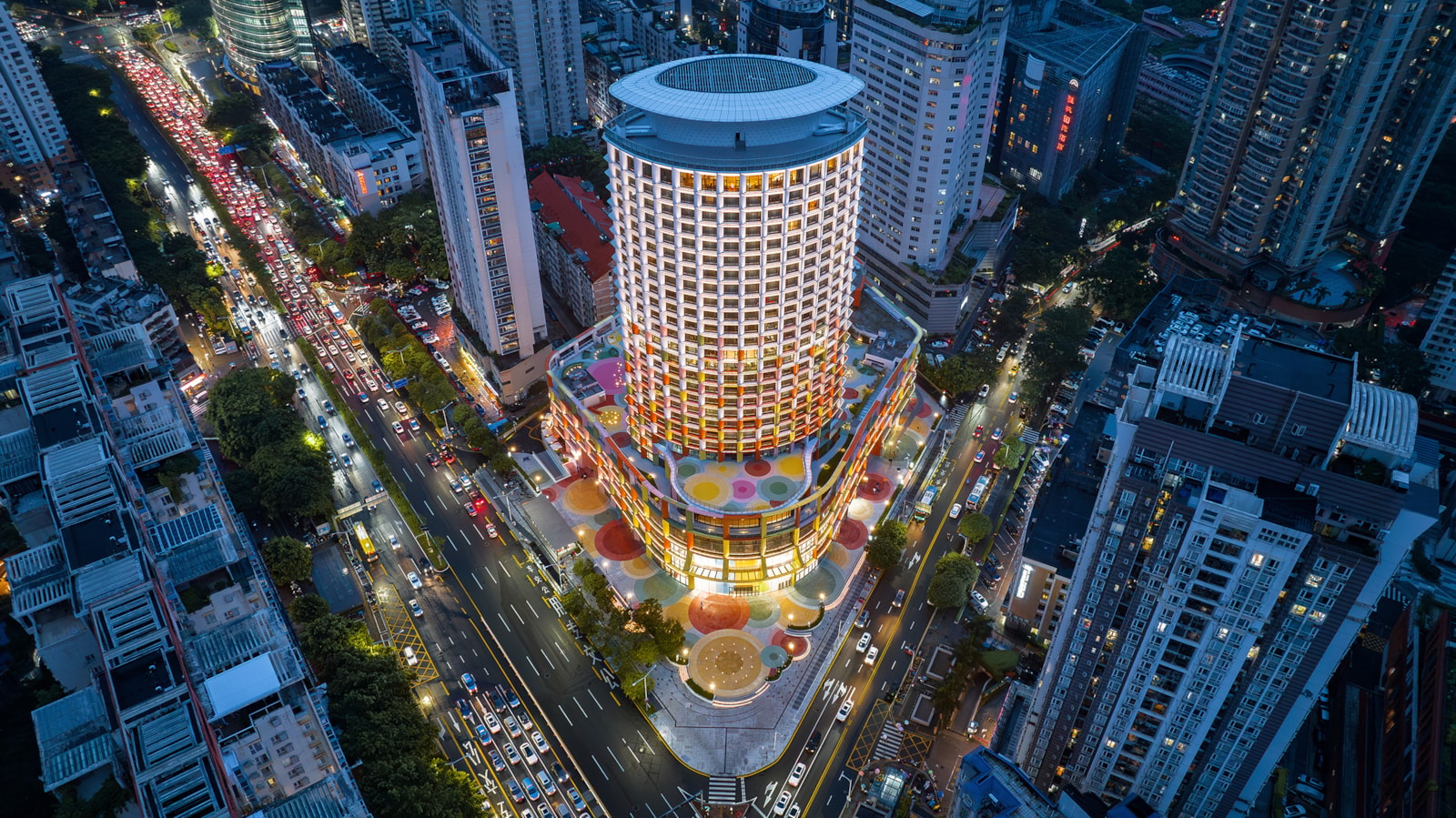
Shenzhen, China – Image Credit: Xia Zhi
The Shenzhen Women & Children’s Center is a playful, colorful design that stands out amidst the city’s dense urban landscape. Its vibrant façade, featuring a mosaic of glass panels, reflects the energy and creativity of Shenzhen. The building emphasizes the integration of public space and social function.
One World Trade Center by Skidmore, Owings & Merrill
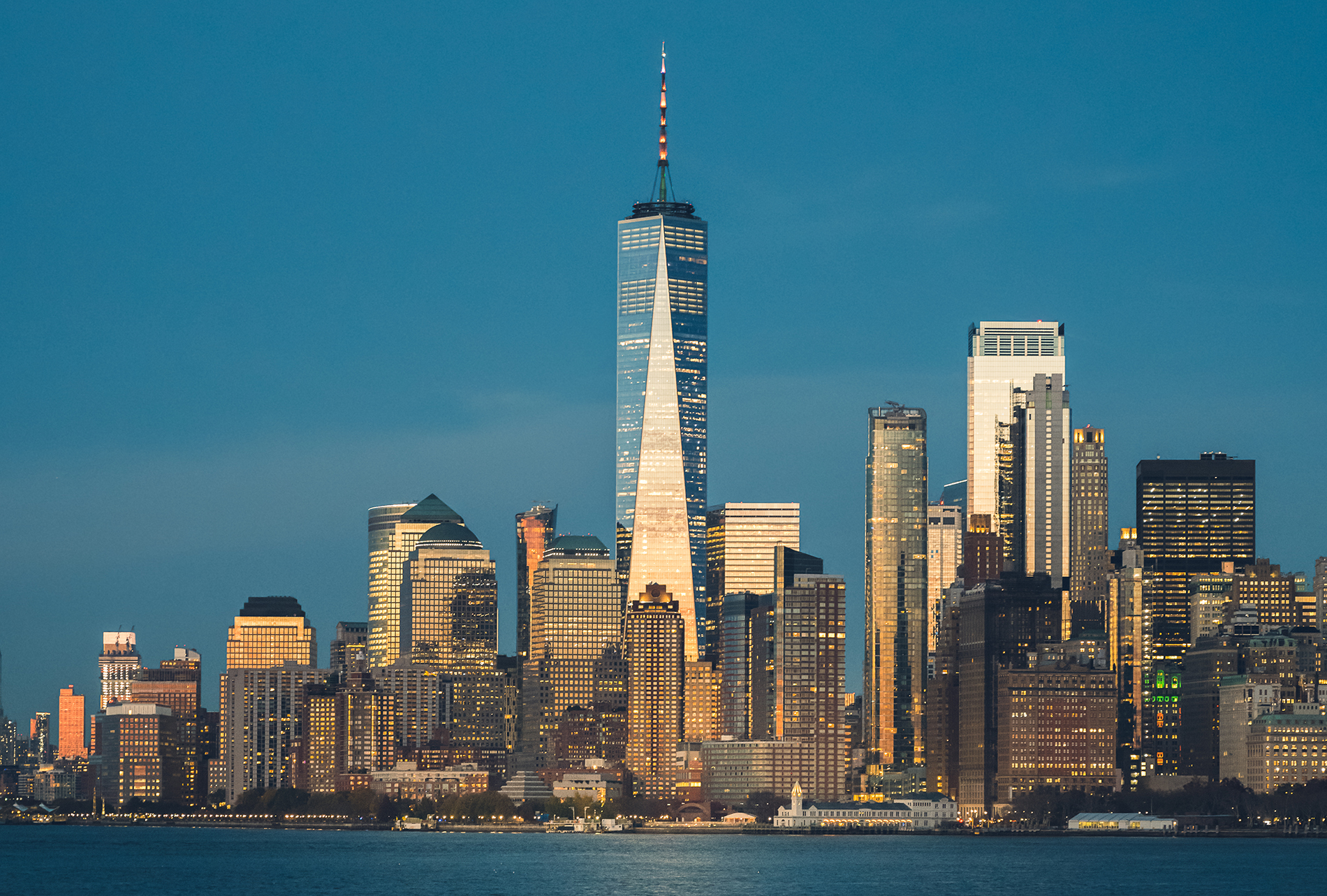
New York City, NY, United States – Image Credit: Timo Günthner
One World Trade Center, also known as the Freedom Tower, is the main building of the rebuilt World Trade Center complex in New York. It is 1,776 feet tall, symbolizing the year of America’s independence. Its reflective glass facade and tapered form give it a powerful, yet serene presence, standing as a beacon of resilience and hope.
Fondation Louis Vuitton by Frank Gehry
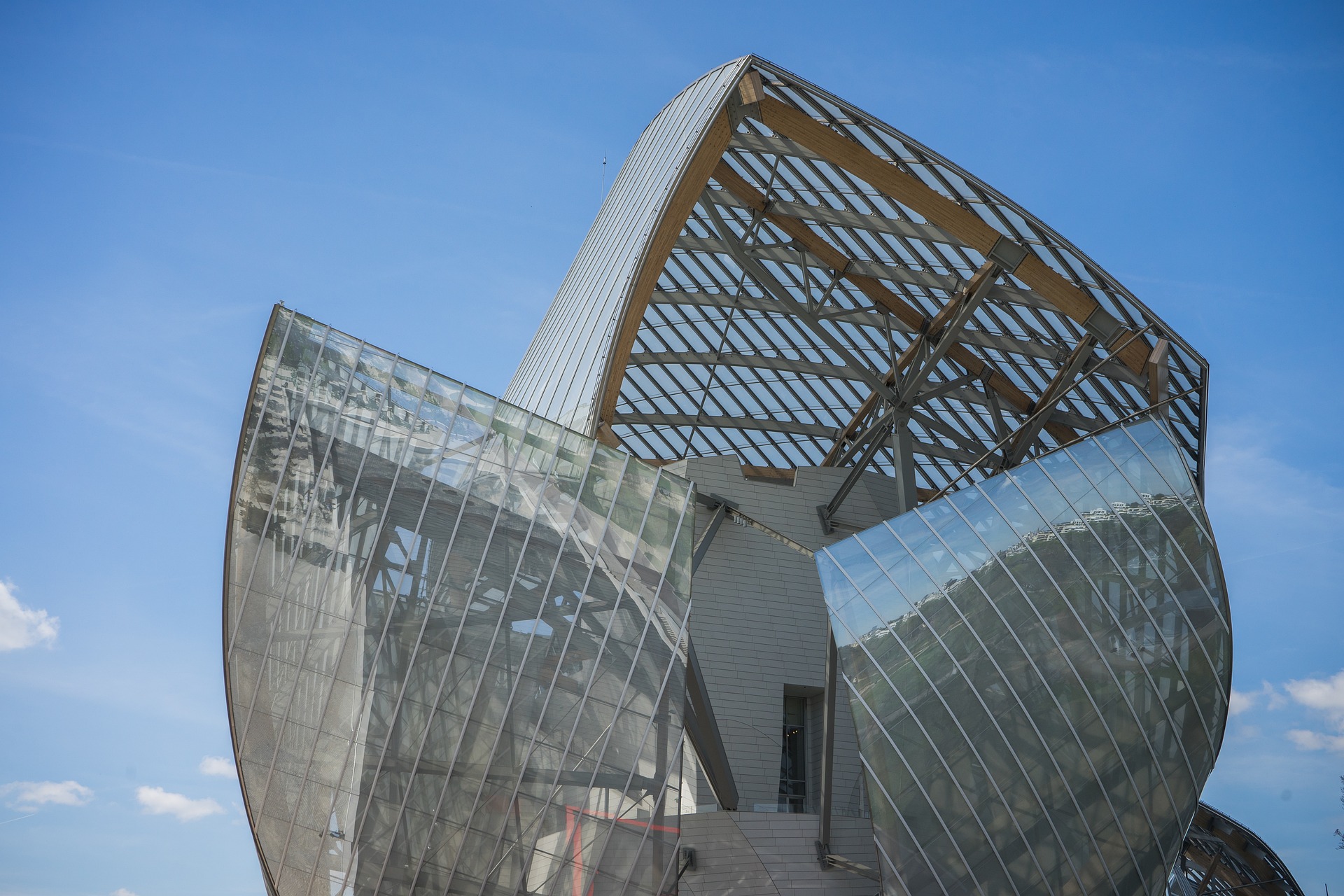
Paris, France – Image Credit: Leonhard Niederwimmer
The Fondation Louis Vuitton is a masterful composition of glass sails. The building, which houses a modern art museum, appears as though it’s in perpetual motion, a feat of engineering and beauty. Gehry’s design harmonizes with the surrounding Bois de Boulogne park, offering an experience of both architecture and nature.
Shanghai Tower by Gensler
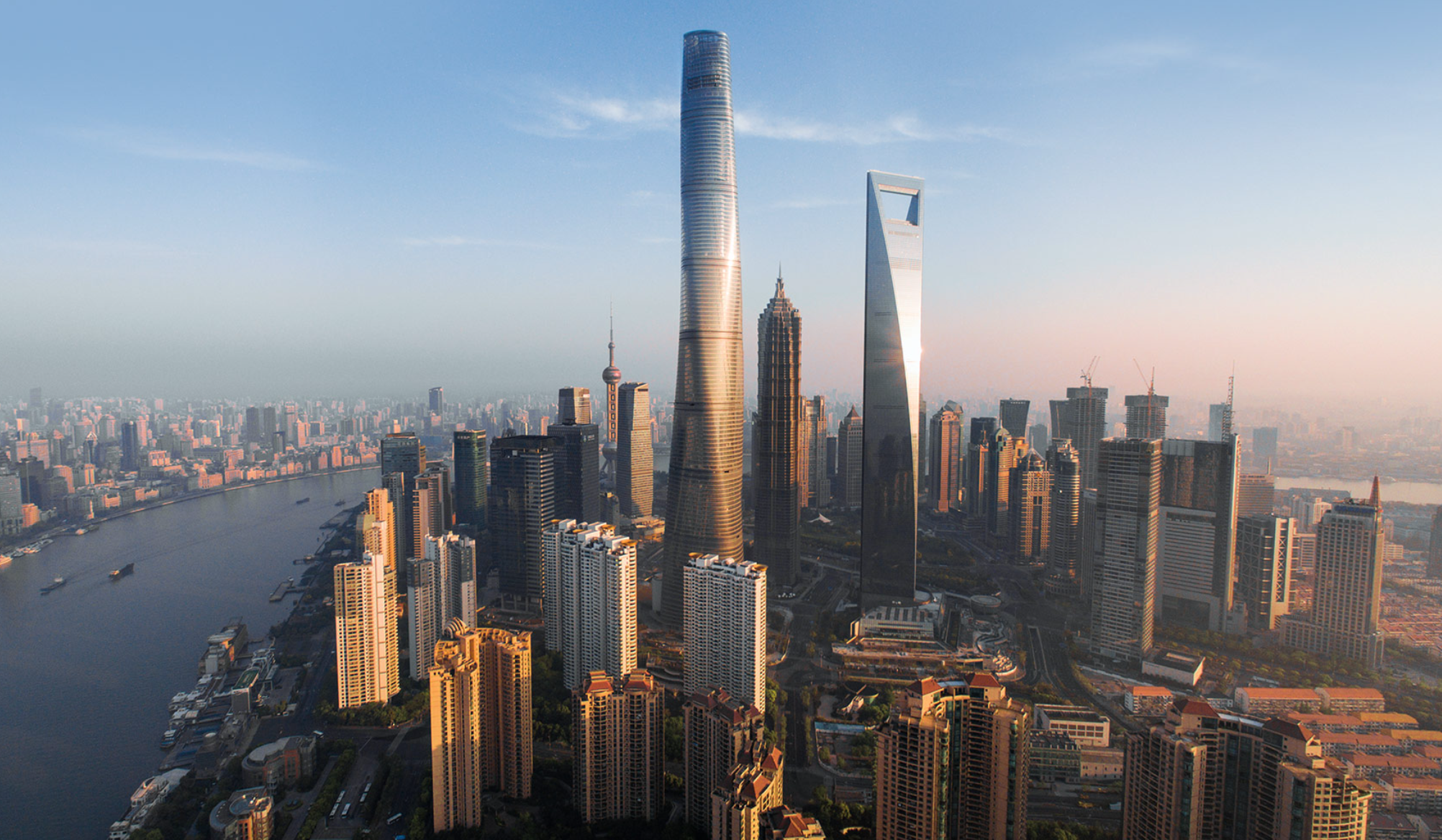
Shanghai, China – Image Credit: www.gensler.com
The Shanghai Tower is the tallest building in China and the second tallest in the world. Its twisting form reduces wind loads and maximizes energy efficiency. The tower’s double-skin façade is not only visually striking but also helps regulate the building’s internal temperature.
Louvre Abu Dhabi by Jean Nouvel
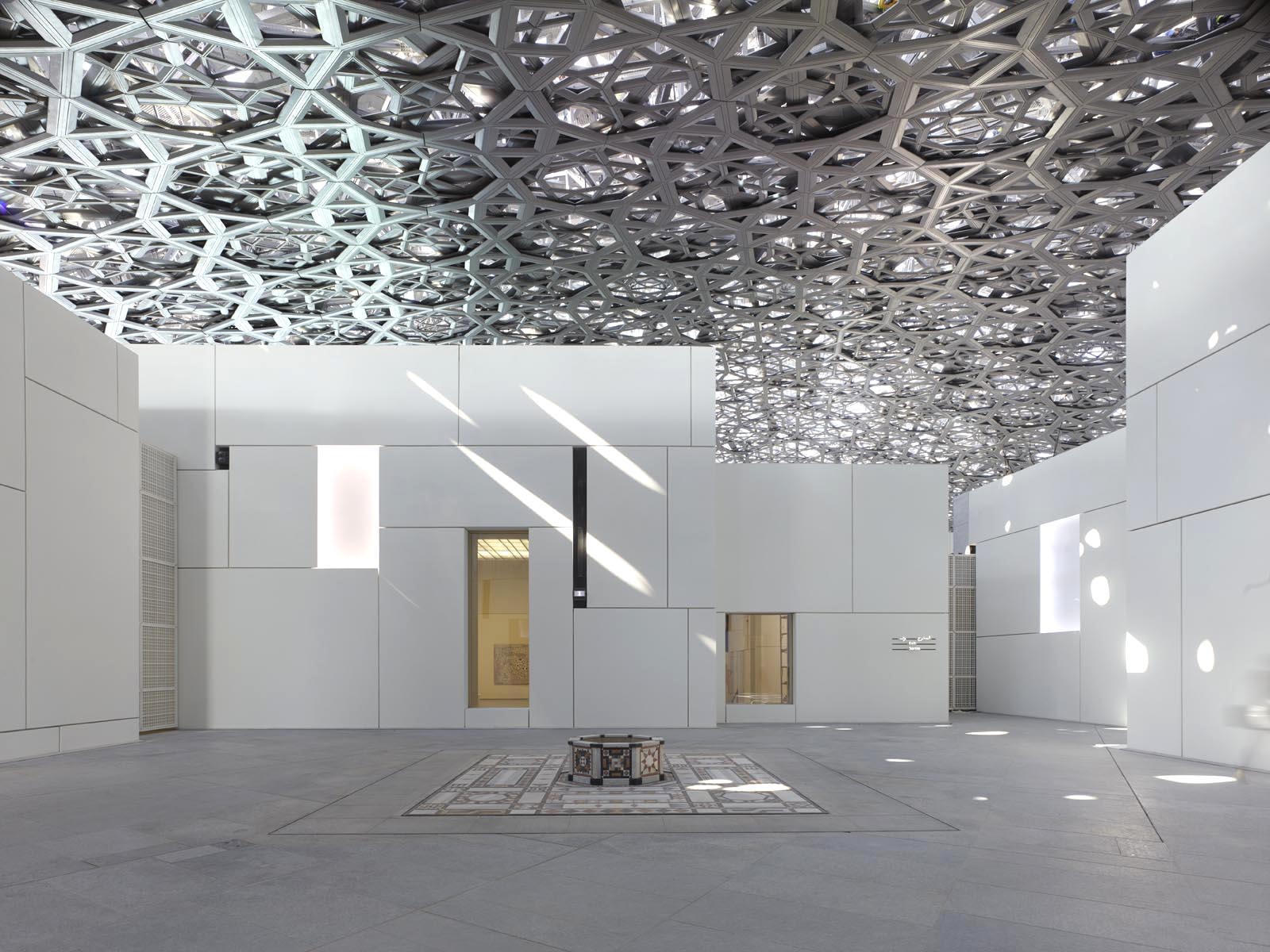
Abu Dhabi, United Arab Emirates – Image Credit: www.jeannouvel.com
The Louvre Abu Dhabi features a massive, perforated dome that creates a “rain of light” effect, drawing inspiration from traditional Arabic architecture. Located on Saadiyat Island, the museum blends modern design with cultural history, serving as a bridge between the East and West.
Elbphilharmonie by Herzog & de Meuron
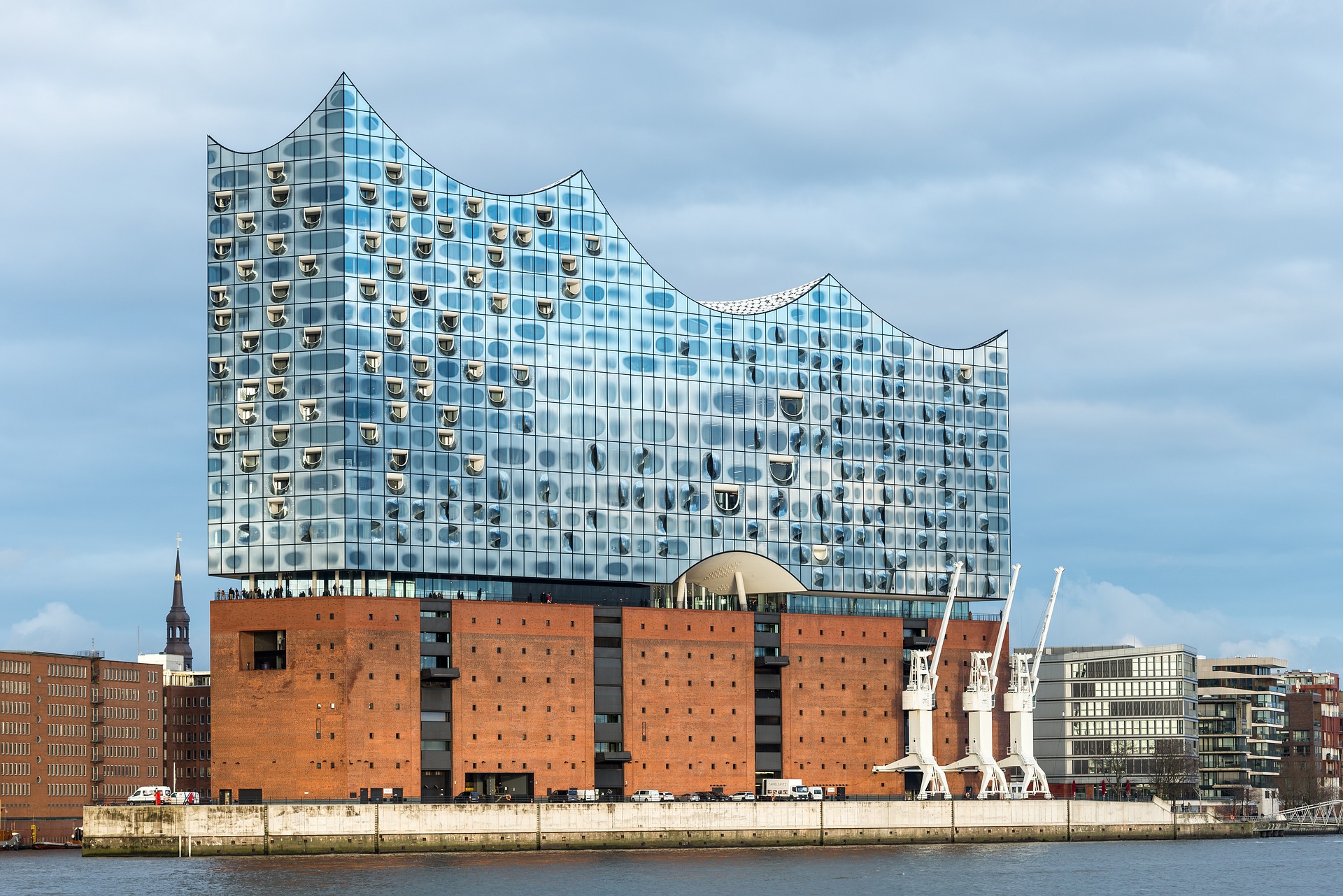
Hamburg, Germany – Image Credit: Wolfgang-1958
Elbphilharmonie is an architectural masterpiece that harmonizes old and new. Built atop a historic warehouse, the structure's striking glass façade with undulating waves mirrors the nearby Elbe River.
Zeitz MOCAA by Heatherwick Studio
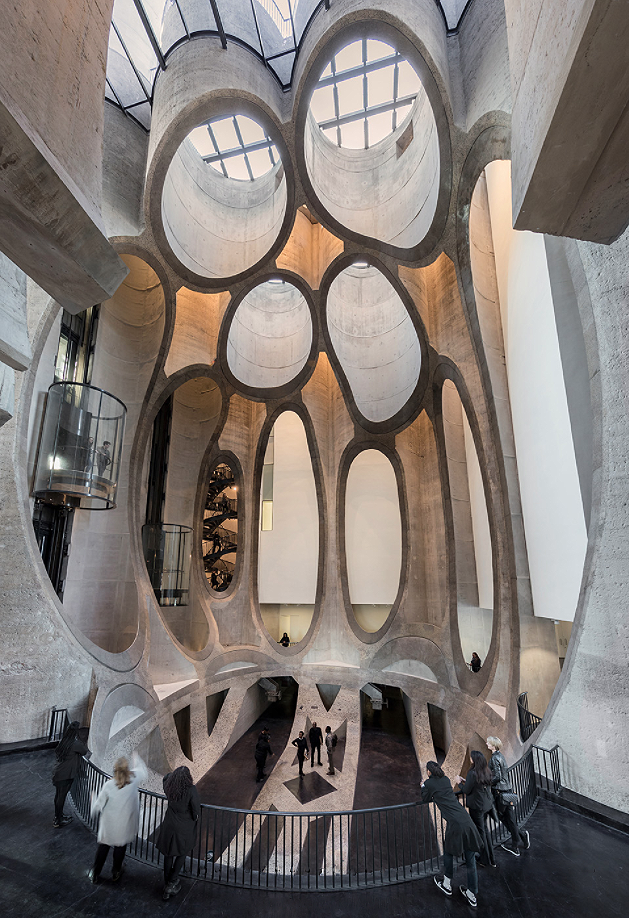
Cape Town, South Africa – Image Credit: www.heatherwick.com
Zeitz MOCAA is housed in a repurposed grain silo, with a carved-out atrium resembling a cathedral of light. This transformative design reimagines industrial heritage into a space for contemporary African art.
432 Park Avenue by Rafael Viñoly
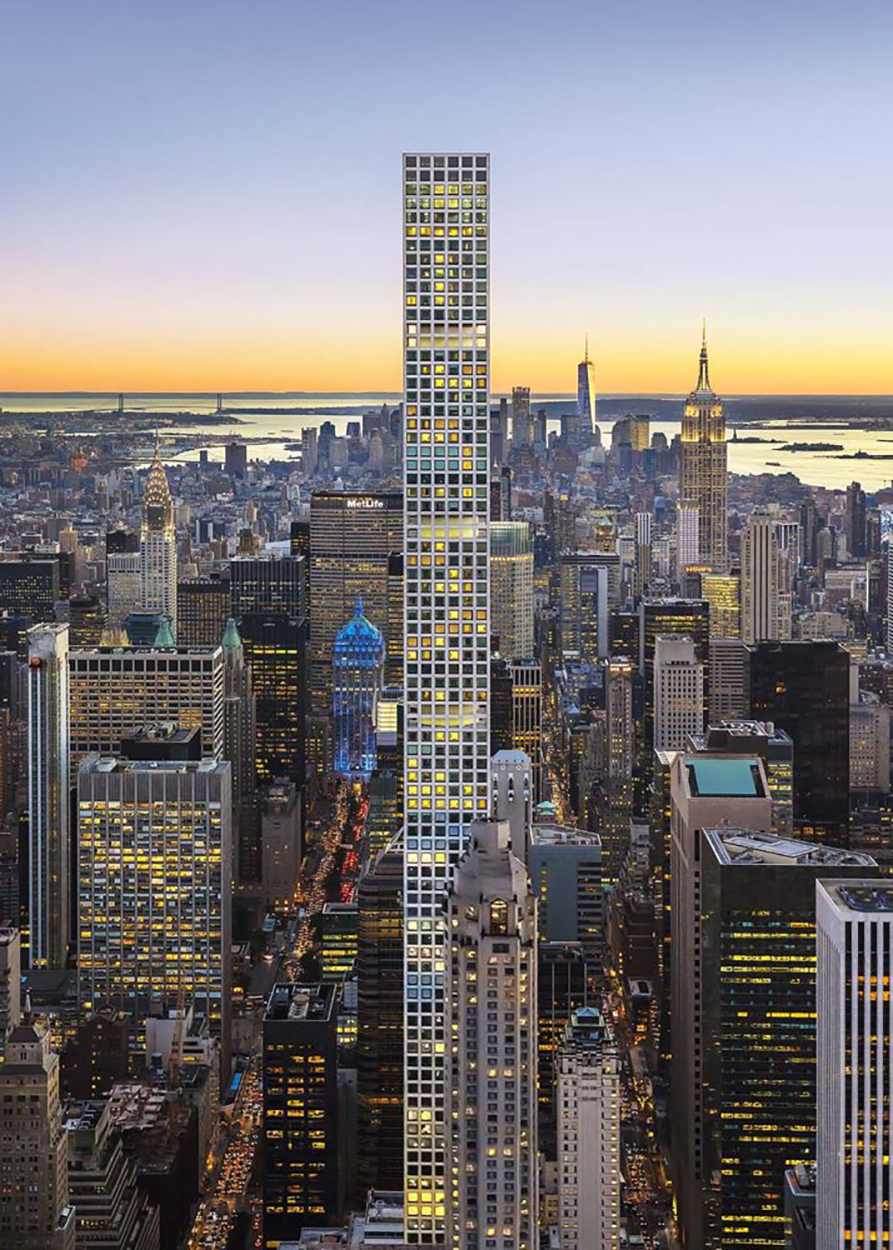
New York City, NYC, United States - Image Credit: https://vinoly.com
432 Park Avenue is one of the tallest residential buildings in the world. Its minimalist design and perfectly squared grid of windows give it a distinctive presence on the city’s skyline. At 1,396 feet tall, it exemplifies the rise of super-skinny skyscrapers that are reshaping urban living.
Bosco Verticale by Stefano Boeri
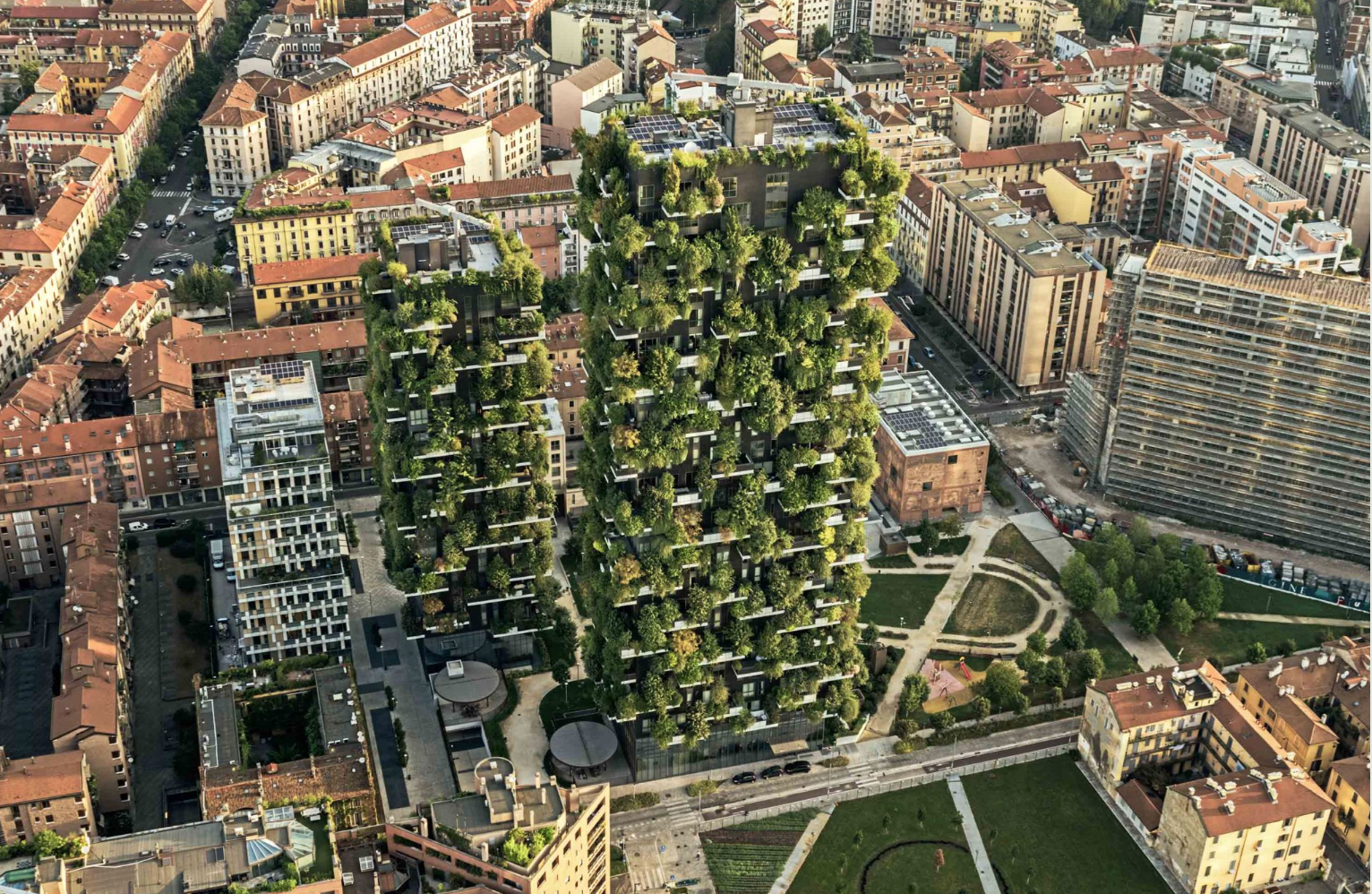
Milan, Italy - Image Credit: www.stefanoboeriarchitetti.net
Bosco Verticale is a visionary approach to green urban living. The twin residential towers are covered in over 900 trees and thousands of plants, creating a vertical forest that improves air quality and promotes biodiversity. This sustainable design has become a model for eco-friendly architecture and urban regeneration, symbolizing a new era of environmental consciousness in building design.
These architectural icons transcend the traditional role of buildings, transforming into symbols of cultural, technological, and environmental progress. From reshaping city skylines to reflecting the ambitions of their societies, each project showcases the potential of architecture to inspire awe and drive change.
--
 BIMsmith is the leading free cloud platform for architects, designers, and building professionals to research, select, and download building product data. Search, discover, compare, and download free Revit families on BIMsmith Market, or build complete, data-rich Revit wall, floor, ceiling, and roof systems faster with the BIMsmith Forge Revit configurator.
BIMsmith is the leading free cloud platform for architects, designers, and building professionals to research, select, and download building product data. Search, discover, compare, and download free Revit families on BIMsmith Market, or build complete, data-rich Revit wall, floor, ceiling, and roof systems faster with the BIMsmith Forge Revit configurator.



 Liz Keizerwaard
Liz Keizerwaard
